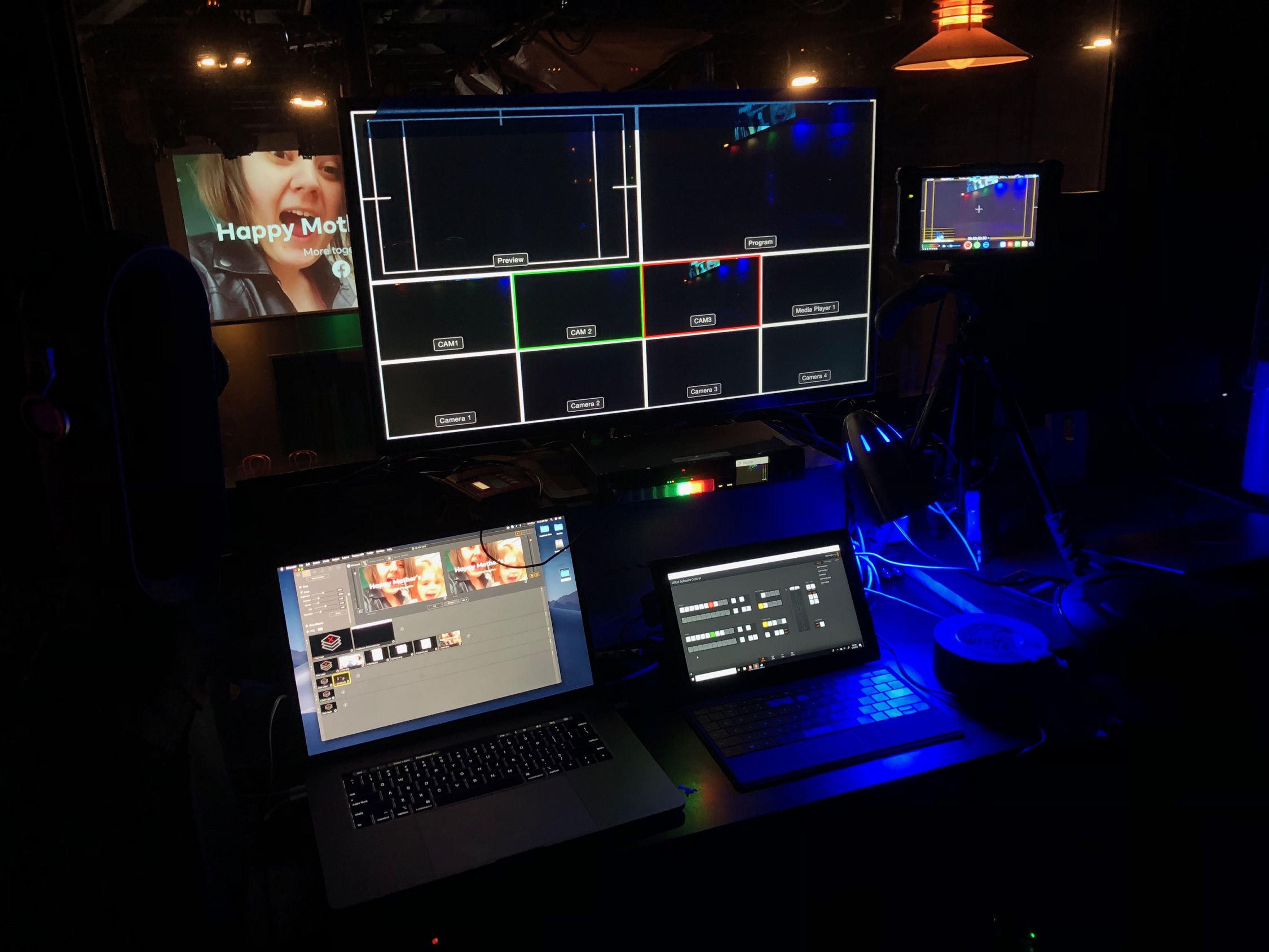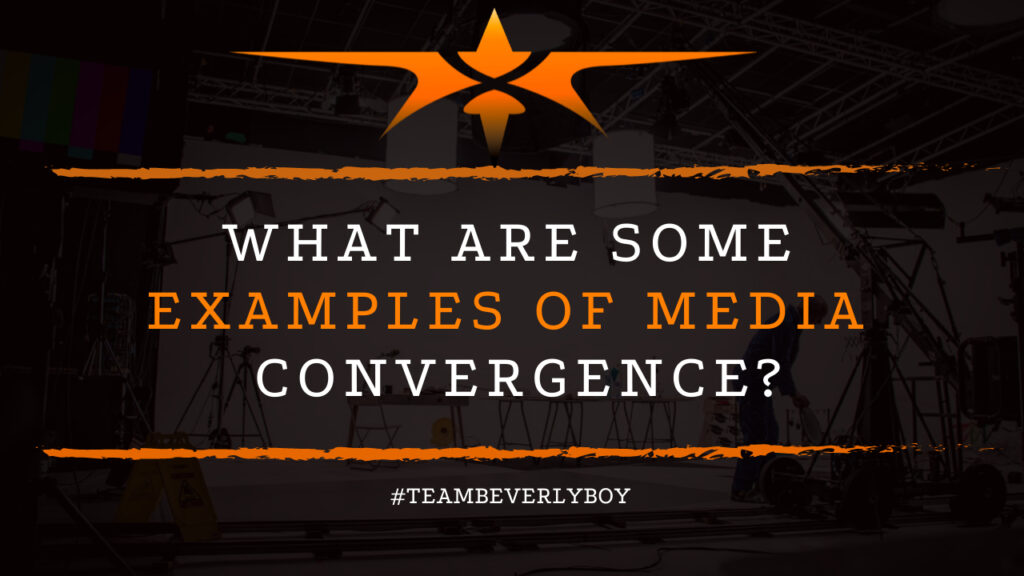What Are Some Examples of Media Convergence?
As industries advance and technology gains take place there are often instances of media convergence or technological convergence. In which previously distinct media technologies merge together with other platforms. Media convergence can also occur in the business world, particularly in the film industry, when different communications companies merge. Or otherwise, integrate their ownership with other media properties, but what are some examples of media convergence in the real world?

WHAT IS MEDIA CONVERGENCE?
Media convergence refers to the merging of different types of mass media resulting from technological advances, leading to the combination of various technologies through digitization and networking.
This process is evident in the evolving landscape of the film industry, where innovative projects often showcase the power of such convergence.
For instance, a Boston camera crew leverages this concept by employing cutting-edge digital technologies to create content that blends traditional filmmaking with modern digital methods.
Their work exemplifies how localized talent can play a crucial role in the broader phenomenon of media convergence, demonstrating its impact on a tangible level.
CONVERGENCE CULTURE
Sometimes referred to as “convergence culture” traditional media convergence represents the merging of technologies.
Or of media content relative to advances in technology related to digitization and advances in technological approaches.
Specifically, convergence culture, represents the ways that digital media has impacted relationships between businesses and their customers, storytellers and their audiences, filmmakers and filmgoers.
AUDIENCE ENCOURAGEMENT
Digital media did not create the audiences that are powerfully engaged and active in today’s environment.
But the technology has certainly enhanced activities that encourage audiences to “join the conversation” or to “take charge.”
The convergence culture has blurred the lines and limitations so that there is heightened immediacy, a greater sense of interconnectedness, and a stronger focus on social movements.
WHAT ARE SOME EXAMPLES OF MEDIA CONVERGENCE?
The most popular example of media convergence is the Smartphone. Smartphones blend together a number of mass media concepts and technologies.
For instance, the smartphone uses print media such as e-books and news apps to deliver text-based technology. It uses broadcast media such as radio and music apps to deliver broadcasted works.
And it uses the internet too. This meshing or merging of communication media is a profound example of media convergence.
CONSIDER THIS
Another example of media convergence is online radio. Online radio combines the mass media of radio communication with the internet to deliver the media convergence of online radio.
E-books represent another form of media convergence. E-books converge the typical paperback book that we’re all accustomed to with the digital technology of an app or the internet.
Together, these two media technologies combine to form the e-book which is then accessible through a computer, tablet, or smartphone.

BENEFITS OF MEDIA CONVERGENCE
As we navigate the many different examples of media convergence, it’s important to examine the benefits of media convergence and what it means for industry professionals.
Media convergence can be incredibly beneficial, particularly now that we are in a digital era in which people are ever-seeking content.
And the content is readily available thanks to all of these different forms of media convergence which have occurred.
INSTANT ACCESS AT YOUR FINGERTIPS
One of the most profound benefits of media convergence is the ability to access content almost instantaneously. Particular news and reports that could be helpful to keeping us safe and well.
Thanks to media convergence, the film industry has also seen increases in the number of businesses that are looking to create content for the Internet.
Including things like informational videos, marketing commercials, and other forms of interactive content.
ADDITIONAL BENEFITS OF MEDIA CONVERGENCE INCLUDE:
- Moment-based content is almost instantaneously available through the convergence of traditional media and new media technologies.
- Customized content is more readily available through the publication of targeted forms of radio, visual, or multi-media ads.
- The audience is now the creator. People who were once only audiences are now able to create social media posts such as memes which combine print media and digital or online media.
- Traditional media limitations have been blurred, with the convergence of new media technology, more people have access to the various forms of content produced through traditional methods and then converged with new media distribution tactics.
- Digital marketing, a media convergence of traditional media and new media, is economical and affordable.
WHY IS MEDIA CONVERGENCE IMPORTANT TO THE FILM INDUSTRY?
Media convergence is important to us for a variety of reasons.
Particularly because the blending of technologies relative to communication, computer networks, and content results in the immediate transformation of established industries.
Through media convergence, new forms of content are established including the introduction of digital media which we’ve seen over the past 20 years.
As well as the introduction of e-books and other forms of content that are the direct result of merging media formats.
ONLINE ARCHIVES
Converging media platforms gives rise to things like online archives. Which display mixed media and offer endless options for users to engage and repurpose content.
Or otherwise, interact with past content by sharing links and commenting on stories. Through media convergence, we’ve seen the introduction of entirely new forms of media.
Including blogs, vlogs, websites, mobile apps, portals, archives, and podcasts. As well as many other formats.
IN SUMMATION
So, what are some examples of media convergence? Media convergence can most simply be described as the converging of media technologies.
Such as we see in the Smartphone which includes broadcast technology, print technology, and networking or internet technology combined into a single device.
Additional examples of media convergence include things like podcasts, websites, and social platforms.

